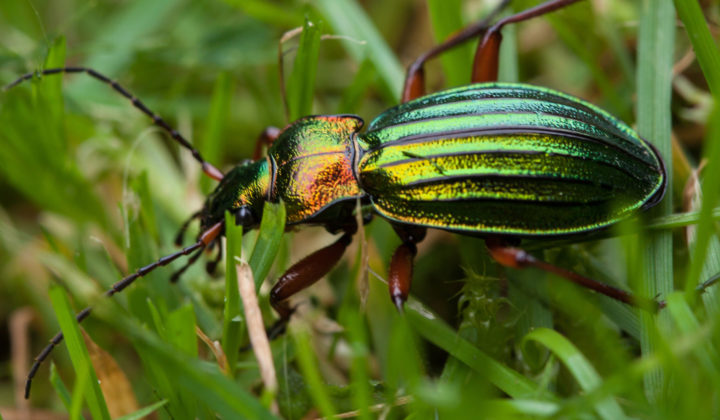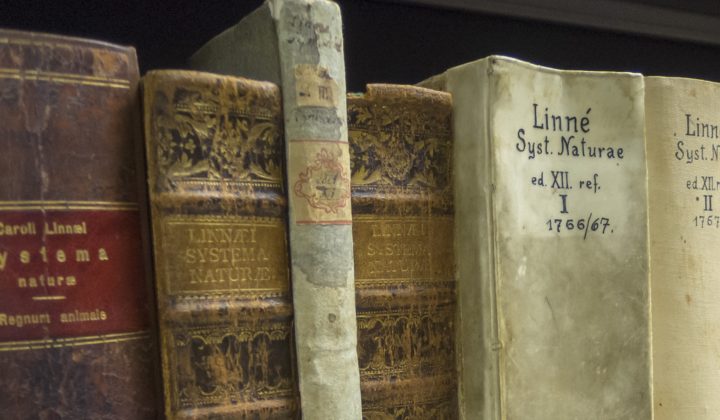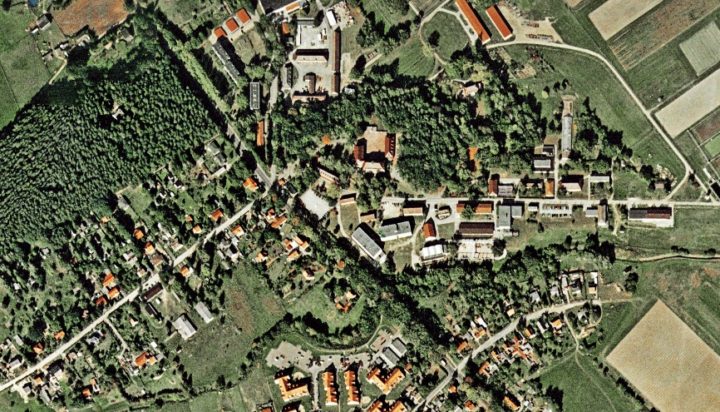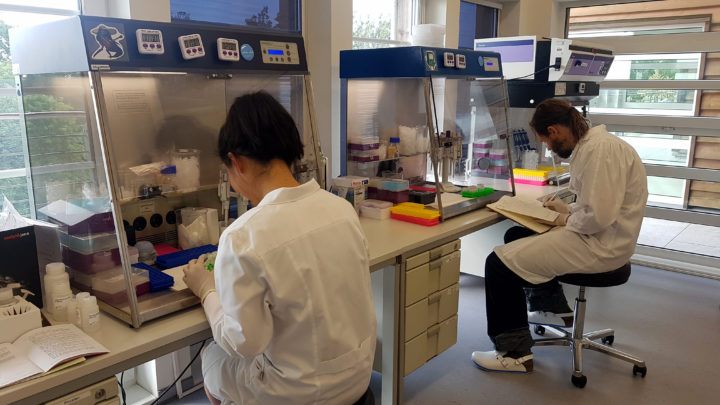
“SCIAROIDEA” – the subject of research
Black Fungus Gnats (Diptera, Sciaroidea: Sciaridae)
The Diptera family of Black Fungus Gnats (Sciaridae) is widespread in all continents of the world andis characterized by great numbers of individuals and species. Worldwide sciarid diversity is estimatedat approximately 8,000 to 10,000 species. Theadults are considered “fast runners” and as relatively”bad flyers.” Because of the small size (0.7 to 15 mm), the often hidden lifestyle and difficulty ofidentification (especially lack of determination tables at the species level) these small Diptera havebeen neglected despite their ecological relevance, which is reflected in a very low number ofspecialists worldwide. According to a species inventory by MENZEL & MOHRIG (2000) there are1,848 validly described species worldwide (139 fossil and 1,709 recent).
About 250 extant speciesthat are treated in subsequent publications are to be added, so that the currently known world faunais composed of approximately 2,100 species. Of these, 921 species occur in the Palaearctic region,626 in Europe and 366 in Germany (based on counts in 1.1.2005). Approximately 40 % of the recentPalaearctic species and 20 % of the described species inventory on Earth are thus known fromGermany. With the foregoingspecies richness, the black fungus gnats currently take tenth place inthe German Diptera fauna. Amongst the “Nematocera” only the gall midges (Cecidomyiidae), thebiting midges (Chironomidae)andthefungusgnats(Mycetophilidae) are more species-rich(SCHUMANN et al. 1999).As larvae black fungus gnats inhabit the decomposition of the soil horizon (leaf litter), are found underthe bark of rotting, rotten trees, develop in fungi (fruiting bodies, mycelium) or mine in herbaceousstems and leaves. On 1 m of ground surface in the field up to 2,600 larvae of a species have been2counted and in fungal cultures up to 200,000.
In a plant root, larval densities of 20 to 80 individualshave frequently been found, and on one stalk 220-800 individuals. Here, the sciarids under optimalconditions produce up to 9 generations. Not infrequently, mass occurrences lead to significant lossesin forestry and agriculture, and may be associated with severe loss of income. Some sciarid speciesare also known under certain conditions to form columns of larvae up to 10 m long and 15 cm wide.These are popularly known as “army worms”. In exploiting animal and vegetable waste, and as preyfor other animal groups (e.g. nematodes, predatory insects, spiders, amphibians and birds), thefungus gnats play an important role in the ecosystem.
Gall Midges (Diptera, Sciaroidea: Cecidomyiidae)
The family Cecidomyiidae (gallmidges) with over 6,000 described species, belongs to the 6 most species rich families of the order Diptera. 5 subfamilies are distinguished: Cecido-myiinae, Catotrichinae,Lestremiinae, Micromyinae and Porricondylinae. The Cecidomyiinae, in every way the most diverse of the subfamilies, contains amongst others the gall midges, per se: the phytophagous forms of significant economic relevance for agriculture, horticulture andforestry. Representatives of the other subfamilies are often referred to as “free-living”gall midges: their larvae are mycetophagous and live “unenclosed”in the substrate, not in galls.The substrate is often dead wood, for which reason the Catotrichinae, Lestremiinae and Micromyinae are collectively often called “wood midges”.
Catotrichinae, Lestremiinae and Micromyinae are each monophyletic groups. ThePorricondylinae, which have no generally accepted common name, are a paraphyletic group, which is currently being split up.Research on gall midges at the SDEI is concentrated on wood midges and porricondylines. Both groups together comprise currently about 1,200 species, most of them from the Palaearctic. We can reckon with 10,000-20,000 further species worldwide. The taxonomic study of Palaearctic wood midges has made great progress during the past few decades; the porricondylines are currently undergoing a thorough revision. The faunas outside the Palae-arctic are little or fragmentarily known, even at generic level. Taxonomic work has always been concentrated on the adults. The larvae of most wood midgesand porricondylinesare unknown.At the SDEI the taxonomy of the wood midges and porricondylines is the subject of world-wide research, whereby the organisational requirements of projects cause particular regions to enjoy temporary priority.At present work is concentrated on the following areas:
- Porricondylinae of Sweden (within the framework of the Swedish Taxonomy Initiative, with part revision of the Palaearctic and Nearctic species)
- Wood midges of the Holarctic(description of new taxa, mostly from Japan)
- Wood midges of the Australian Region (description of new taxamainly from Tasmania and New Caledonia)
- Wood midges and porricondylinesof the Afrotropical Region(at generic level, contribution to theManual of Afrotropical Diptera)
- Wood midges and Porricondylinae of the Neotropical Region (at generic level, continuation of research after publication of the Manual of Central American Diptera)
Phylogenetic research on wood midges and porricondylines is concentrated on the creation of a natural classification at the subfamily and tribal level. In the past few years, the para-phyletic „Lestremiinae“ (in the old sense) were transferred to monophyleticgroups(Catotri-chinae, Lestremiinae s. str., Micromyinae). The dissolution of the paraphyleticPorricondyli-nae is currently in progress.Since 2008 the worldwide largest reference collection of wood midges has been held at the SDEI and is continually being added to. In 2009 the foundation of arepresentative collection of Porricondylinae was commenced.
Fungus Gnats (Diptera, Sciaroidea: Bolitophilidae, Diadocidiidae, Ditomyiidae, Keroplatidae, Lygistorrhinidae and Mycetophilidae)
Under the name „fungus gnats“ are drawn together several closely related families of the Sciaroidea: Bolitophilidae, Diadocidiidae, Ditomyiidae, Keroplatidae, Lygistorrhinidae and Mycetophilidae. About a third of the worldwide 5000 named species is found in the Palaearctic. As far as is known, the larvae of most fungus gnats- as indicated by the name –eat fungi, whereby all fungal growth stages are consumed (mycelium, fruiting bodies, spores). The damp woodlands of the Earth are the main scene of the development of a mostly unexplored richness in fungus gnats. Only the fungus gnats of the Palaearctic and Nearctic are taxonomically so well understood, that they can be identified to species level- although often with group-specific and regional differences.
At present, it is still in the Holarctic that fungus gnats are being most intensively researched. The fungus gnats of other biogeographical regions are much more neglected and have no constant researcher- a grotesque situation, when one considers the fact that fungus gnats are amongst the most abundant and also attractive nematoceran Diptera in woodlands. To alleviate the lack of research on extra-Holarctic fungus gnats, selected groups of these are being studied taxonomically at the SDEI, mostly as a „side effect“ of projects with different main objectives. In this way, works on the Diadocidiidae and Mycetophilidae (Leiinae, Gnoristinae, Manotinae, Sciophilinae) appeared in recent years, mainly concerned with the Neotropics and Australasia. With the same emphasis, these endeavours are being continued.
Unplaceable Fungus Gnat-like Two-winged Flies (Diptera: Sciaroidea Incertae Sedis
Within the fungus gnat-like midges (Sciaroidea) there has always been a number of taxa that could not be assigned to any of the established families. These are the Sciaroidea incertae sedis, informally and more simply called “unplaceables” or “enig-matics”. These currently comprise around 19 genera and 50 species. A shared characteristic of all unplaceables is their rarity, both in their natural habitats as well as in collections. The moist temperate forests in the southern hemisphere are their main extant distribution area, with a few species known from the Palaearctic, and some from Baltic amber. Virtually every newly found adult is of interest. Larvae are unknown.The scientific interest in Sciaroi-dea incertae sedis is phylogenetic in nature. It is especially the “unplaceables” that continually reignite the debate about family boundaries and inter-family relationships within the Sciaroidea. With redescription of the endemic New Zealand family Rangomara-midae in 2002 this discussion has been raised to a new level. Within a few years two contrasting phy-logenetichypotheses on the Rango maramidae were published that considered this taxon to be either a subfamily of the Sciari-daeora collective group (at the family level) for all former “un-placeables”. Most likely neither the one nor the other of these hypotheses reflects reality. It is widely accepted among Sciaroidea experts that among the“unplace-ables” multiple evolutionary lines are hidden, where each of these corresponds with a lineage in use today at independent family rank. What is missing is a sound phylogenetic analysis, which would support such a hypothesis! The high phylogenetic age and relative poverty in characters of these gnats are most objective reasons for the failure of previous analytical attempts – which were however also always approached with a surfeit of ambitionon the part of the authors. Since publication of the last hypothesis in 2007 (for now), a puzzled silence has reigned. For now, the “unplaceables” remain the “enigmatic”! The Sciaroideaincertae sedis are a further focus of SDEI employees since the year 2002. The work focuses less on the numerical analysis of known characteristics/taxa thanonthe discovery of new taxa and previously overlooked character complexes. The principle is that only extra information can help improve the understanding of character evolution.
Work areas
Taxonomy und phylogenetic Systematic
- Clarification of nomenclatural questions by application of the International Code of Zoological Nomenclature
- Depiction of taxonomic units using drawings, photos and written descriptions
- Evaluation of the diagnostic and phylogenetic suitability of character states
- Preparation of illustrated identification keys
- Contributions to the supraspecific classification of the Sciaroidea
- Searching for new approaches in the reconstruction relationships and interpretation of the evolutionary direction of character transformations
- Contributions to a hypothetical phylogenetic tree for the fossil and recent Sciaroidea
- Study of the temporal and spatial dimension of species formation and extinction processes
Biodiversity research
- Recording and interpreting the species richness in selected habitats
- Compiling checklists and complex national faunas
- Investigation of faunal change
Zoogeography
- Uncovering patterns of geographical distribution (zoogeographic analyses and comparisons between faunas)
- Contributions to the history of dispersal and colonisation (population density, faunal relationships, faunal isolation)
- Derivation of causal relationships between distribution and evolution (influence of geomorphological and/or climatic processes on the phylogenesis of the Sciaroidea)
Ecology and Bioindication
- Niche occupation of selected groups of Sciaroidea and their significance in ecosystems (primarily in forest ecosystems)
- Influence of biotic parameters on the composition of biotic coenoses
- Statements on the potential of Sciaroidea as bioindicators and the common occurrence of species or groups of species in certain habitats (coenological coincidences)
Protection of nature and the environment
- Estimation of the degree of endangerment and the identification of the reasons for endangerment
- Contributions to species and biotope protection (recommendations on maintenance of populations of endangered species and on the designation of nature reserves)
- Development of guidelines for action (survey reports, red lists)
Research Projects
Fossil and recent Sciaroidea (Diptera) in autochtonous Woodlands of the World
Research on Diptera at Senckenberg is concentrated on selected groups, which mostly belong to the superfamily Sciaroidea in the infraorder Bibionomorpha. At the Senckenberg Deutsches Entomologisches Institut (SDEI) the black fungus gnats (Sciaridae), gall midges (Cecidomyiidae), fungus gnats (Mycetophilidae) and the flies of unclear taxonomic affinity that resemble fungus gnats (Sciaroidea incertae sedis) are being investigated. Within the long-term research focus “Fossil and recent Sciaroidea in autochtonous woodlands of the world” three co-operative projects are running, with research themes planned until 2020.
Project 1: Sciaroidea in Amber – A contribution to Reconstruction of Phylogenetic Relationsships
- Revision of the genus Heterotricha Loew (Sciaroidea incertae sedis) in Baltic amber – JASCHHOF
- The phylogeny of black fungus gnats (Diptera: Sciaridae) in the Caenozoic – a contribution to the palaeozoogeography and distribution of recent taxa – MENZEL & MOHRIG (in preparation, external funding)
- The type catalogue »The Black Fungus Gnats (Diptera: Sciaridae) of the World. Part 1: Fossil Sciaridae« – MENZEL
Project 2: Recent silvicola Faunas of Sciaroidea in the temperate and the tropical Zones of the World
- The type catalogue »The Black Fungus Gnats (Diptera: Sciaridae) of the World. Part 2: Recent Sciaridae« – MENZEL (partly externally funded)
- Development of the website of the »International Project Group Sciaridae (IPS)« – MENZEL & GROLL
- Digital identification keys to the black fungus gnats of the Palaearctic and Afrotropical Regions (Fauna of the Seychelles, the United Arab Emirates and the British Isles) – MENZEL & GROLL
- Electronic Catalogue of the Sciaridae Literature of the World – MENZEL & GROLL
Afrotropical region
- Revision of the black fungus gnats (Sciaridae) of the Afrotropical Region – MENZEL (partly externally funded)
- Identification book »Manual of Afrotropical Diptera« (Sciaridae) – MENZEL
- The genus Anodontoceras Yukawa in South Africa (Cecidomyiidae: Lestremiinae) – JASCHHOF & JASCHHOF
Australasian region
- Wood midges (Cecidomyiidae: Lestremiinae) in the Southern Hemisphere – JASCHHOF & JASCHHOF
◦ Peromyiini and Pteridomyiini in Tasmania (partly externally funded)
◦ The genus Peromyia Kieffer (Cecidomyiidae: Lestremiinae) in New Caledonia - Mycetophilidae s. str. (Sciaroidea) of New Zealand – KALLWEIT & JASCHHOF
◦ The Cycloneura Marshall group of genera – JASCHHOF & KALLWEIT
◦ The genus Austrosynapha Tonnoir & Edwards – KALLWEIT & JASCHHOF
◦ The genus Manota Williston – JASCHHOF - The Phylogeny of the Black Fungus Gnats (Diptera: Sciaroidea: Sciaridae) of the Australasian Region, with special consideration of the fauna of New Zealand – KÖHLER (Ph.D. thesis), MENZEL, JASCHHOF, MOHRIG
Nearctic region
- Revision of Black Fungus Gnats (Diptera: Sciaridae) of North America – MOHRIG et al.
Neotropical region
- Contributions to the systematics of the Neotropical black fungus gnats (Sciaridae) based on revision of types – MOHRIG & MENZEL
Palearctic region
- Contributions to the monography »The arthropod fauna of the United Arab Emirates« (Sciaridae & Cecidomyiidae) – MENZEL, JASCHHOF & JASCHHOF (partly externally funded)
- Contributions to the Fauna Europaea (Cecidomyiidae, Mycetophilidae s. l. & Sciaridae) – JASCHHOF, JASCHHOF, KALLWEIT, MENZEL & MOHRIG
◦ The Porricondylinae (Cecidomyiidae) of Sweden – JASCHHOF & JASCHHOF (externally funded)
◦ Monography »Handbooks for the Identification of British Insects. Black Fungus Gnats (Diptera: Sciaridae)« – MENZEL (partly externally funded)
◦ The Literature supporting the Checklist of German Diptera, with addenda to Entomofauna Germanica (Cecidomyiidae, Mycetophilidae s. l. & Sciaridae) – MENZEL, JASCHHOF & KALLWEIT
◦ The Sciaroidea of the Sächsische Schweiz (Mycetophilidae s. l. & Sciaridae) – a survey of diversity in the Elbsandsteingebirge – KALLWEIT & MENZEL
◦ Studies on the Sciaroidea fauna in the catchment area of the Uecker – a contribution to biodiversity in anthropogenically influenced habitats in northern Europe (Sciaridae & Mycetophilidae s. l.) – MENZEL - Contributions to the diversity and systematics of the Sciaroidea in the eastern Palaearctic – JASCHHOF, MENZEL & MOHRIG
◦ The genus Aprionus Kieffer (Cecidomyiidae: Lestremiinae) in Japan – JASCHHOF
◦ Review of the genus Keilbachia Mohrig (Sciaridae) – MENZEL (partly externally funded)
◦ Revision of the East Palaearctic Sciaridae (China, Japan, Russia) – MENZEL & MOHRIG
Project 3: Phylogeny of the Sciaroidea: Quality instead of Quantity in the Development of a Hypothesis
- The imaginal morphology within the Sciaroidea: homologous structures and universal terminology – JASCHHOF, KALLWEIT & MENZEL
- New »Sciaroidea incertae sedis« from previously undetermined Diptera material in museums and private collections – JASCHHOF & JASCHHOF
Cooperations and Networks
International Project Network Sciaridae (IPS)
In 1994 the »International Project Network Sciaridae« (IPS) was founded, which unites scientists of different disciplines and brings them together in a binding network of projects. A worldwide network for interdisciplinary co-operative research was created to solve global problems in biodiversity and phylogenetic research, as well as to elucidate causal relationships in the fields of palaeontology and applied research on Diptera (with respect to the study object “Sciaridae”).
Currently coordinated within the project network is the work of 13 Sciaridae specialists from Germany, Great Britain, Finland, Japan, Kazachstan, Russia, Sweden and South Korea. As a result of the research profile and because of its specialised entomological library, the SDEI became responsible for project coordination and its function as a centre for literature and information (Dr. Frank Menzel). The results of research are jointly published by members of the IPS, and exchanged within the group and with project partners in order to answer questions of interdisciplinary nature. The compilation, processing and analysis of the research results takes place in a database. You can find more information on the »International Projekt Network Sciaridae« on the following pages.
Sciaridae specialists in the IPS
Publications from the IPS (selection)
Swedish Taxonomy Initiative (STI)
The Swedish Taxonomy Initiative (STI; Swedish: Svenska Artprojektet) is a state funded research project presently intended to run for 20 years. Its objective is to record and document the 60,000 multicellular animal and plant species found on Swedish territory.
The STI inventories not only the previously known groups of organisms, but provides generous funding for research on particularly neglected groups of organisms. The SDEI is involved in two part-projects under the remit of the STI (Dr. Mathias Jaschhof). The first part-project was concluded in 2009 with the publication of the book „The Wood Midges (Diptera: Cecidomyiidae: Lestremiinae) of Fennoscandia and Denmark“. The second part-project also concerns fungus-feeding gall midges (Cecidomyiidae) and focusses on taxonomic research on the Porricondylinae of Sweden. This work will continue into 2012. More information on the »Swedish Taxonomy Initiative« (STI) can be found on the Website of ArtDatabanken.
Fauna Euopaea
Recorded and considered are all data on the diversity of dark-winged fungus gnats (Sciaridae) in member states of the European Union. To this end, literature searches are conducted, own collections of material made, more recent material at the SDEI or other research institutes is scientifically assessed and the data on occurrence recorded electronically (IPS datenbase). The results flow in processed form into the »Fauna Europaea Database Project«, supported by the European Union. In 2004 the data were made available to this project for 621 sciarid species and the first checklists with distribution maps published (Heller & Menzel 2004: Fauna Europaea: Sciaridae. – In: de Jong, H. (ed.): Fauna Europaea: Diptera, Nematocera. – Fauna Europaea. Database version 1.1, Amsterdam). In future work will be concentrated on little known regions of central and western Europe or on the analysis of larger batches of material acquired from jointly run ecological projects. Additionally, work will be done on national faunas of individual states (Germany, Portugal, Spain, Czech Republic) or on diverse checklists (Estonia, France, Luxembourg, Malta, Sweden, Slovakia, Czech Republic). A significantly re-worked edition of Version 1.2 is currently being prepared, in which also new knowledge on the nomenclature and systematics of Sciaridae is presented. More information on this database project can be found on the Website of Fauna Europaea.
German Diptera Working Group – Independent Representation of the Interests of German Dipterists
The German Diptera Working Group (AK DIPTERA) is an independent forum for German dipterists. Both amateur scientists and professional entomologists belong to this super-regional and interdisciplinary organ. The working group has no strict organisational structure. It is supported by the Deutschen Gesellschaft für allgemeine und angewandte Entomologie (DGaaE) and the Entomofaunistischen Gesellschaft (EFG). The honorary administration of the AK DIPTERA is currently in the hands of Dr. Frank Menzel, SDEI Müncheberg (head) and Dr. Doreen Werner, ZALF Müncheberg (deputy head).
As a platform for work in progress and discussions, the AK DIPTERA encourages contact between dipterists across national borders and initiates its own research projects. It delivers first and foremost contributions to the Diptera fauna of Germany, conducts literature searches on the Diptera fauna and collates information on the size and place of repositories of collections of Diptera in the German Federal Republic. Further areas of activity derive from the growing significance as a centre for information and advice. To these activities may be reckoned the recommendation of cooperative partners and advice on persons who might be prepared to identify specimens. To the significant fields of work of the working group belong – with special emphasis on the Diptera – faunal studies and zoogeography, comparitive morphology, phylogenetic systematics, ecology and aspects of behavioural and applied studies. The AK DIPTERA meets annually. To this end a two day symposium consisting of 5-6 talks and a whole day excursion is held usually between the 1st and 30th of June. Participants are also able to exchange thoughts and views during the evening in an informal atmosphere. More information can be found at Website of the AK DIPTERA.
Studia Dipterologica
The »Studia dipterologia – Journal of taxonomy, systematics, ecology and faunistics of Diptera« (ISSN 0945-3954) was founded in 1994 by Dr. Andreas Stark (Halle an der Saale) and Dr. Frank Menzel (Müncheberg). Resulting from a private initiative, it has developed into the most significant journal with content exclusively referring to Diptera. Original works in the field of taxonomy, phylogenetic systematics, faunal studies, biology, ecology, zoogeography and behavioural research are published, as long as they principally relate to the order Diptera.
Additionally, works on the life’s work of dipterists (biographies, festschriften, obituaries, publication lists), travel and expedition reports, works on collections of Diptera, catalogues and checklists on selected groups of Diptera, announcements of events for dipterists, reports on symposia and congresses, short notes and book reviews are also published. The »Studia dipterologica« was published up to 2009 by the Ampyx-Verlag (Halle an der Saale). Since January 2010 it is issued by the Senckenberg Deutsches Entomologisches Institut (Müncheberg). Editors are Frank Menzel (Müncheberg), John Kramer (Oadby) and Andreas Stark (Halle an der Saale). Editorial duties are performed at the SDEI by Frank Menzel, Mathias Jaschhof and Andrea Thiele. The journal possesses an international editorial panel, actively supported by the editors. The scientific panel comprises 21 people from Australia, Belgium, Denmark, Germany, Great Britain, the Netherlands, South Africa, the Czech Republic and the USA. Subscribers to the »Studia dipterologica« come from over 30 countries spread worldwide. The journal is abstracted by the Zoological Record (BIOSIS), CAB Abstracts (CABI) and VINITI (Moscow). More information can be obtained at Website of the Studia dipterologica. Please send enquiries and orders to Dr. Frank Menzel.
Studia Dipterologica Supplement
The series »Studia dipterologica Supplement – Dipterological Monographs« (ISSN 1433-4968) was founded in 1997 by Dr. Andreas Stark (Halle an der Saale) and Dr. Frank Menzel (Müncheberg). Appearing irregularly, but normally with one or two volumes per year), the series contains monographies on Diptera that are longer than 50 printed pages. In this way authors are given the opportunity to publish longer original articles on Diptera. Similarly to the journal »Studia dipterologica«, the series sets out to support the scientific objectives of dipterists. The profile of »Studia dipterologica Supplement« accordingly is orientated on that of »Studia dipterologica«. The main content consists however of complete revisions, works on identification, complex national faunas, checklists, catalogues, collection and type catalogues, bibliographies as well as theoretical and entomological-historical contributions on the Diptera. Doctoral theses concerning Diptera are also published, as long as these are judged at least “good” by the reviewers. You can obtain further information at the Website of the Studia dipterologica Supplement. Please send enquiries and orders to Dr. Andreas Stark.






